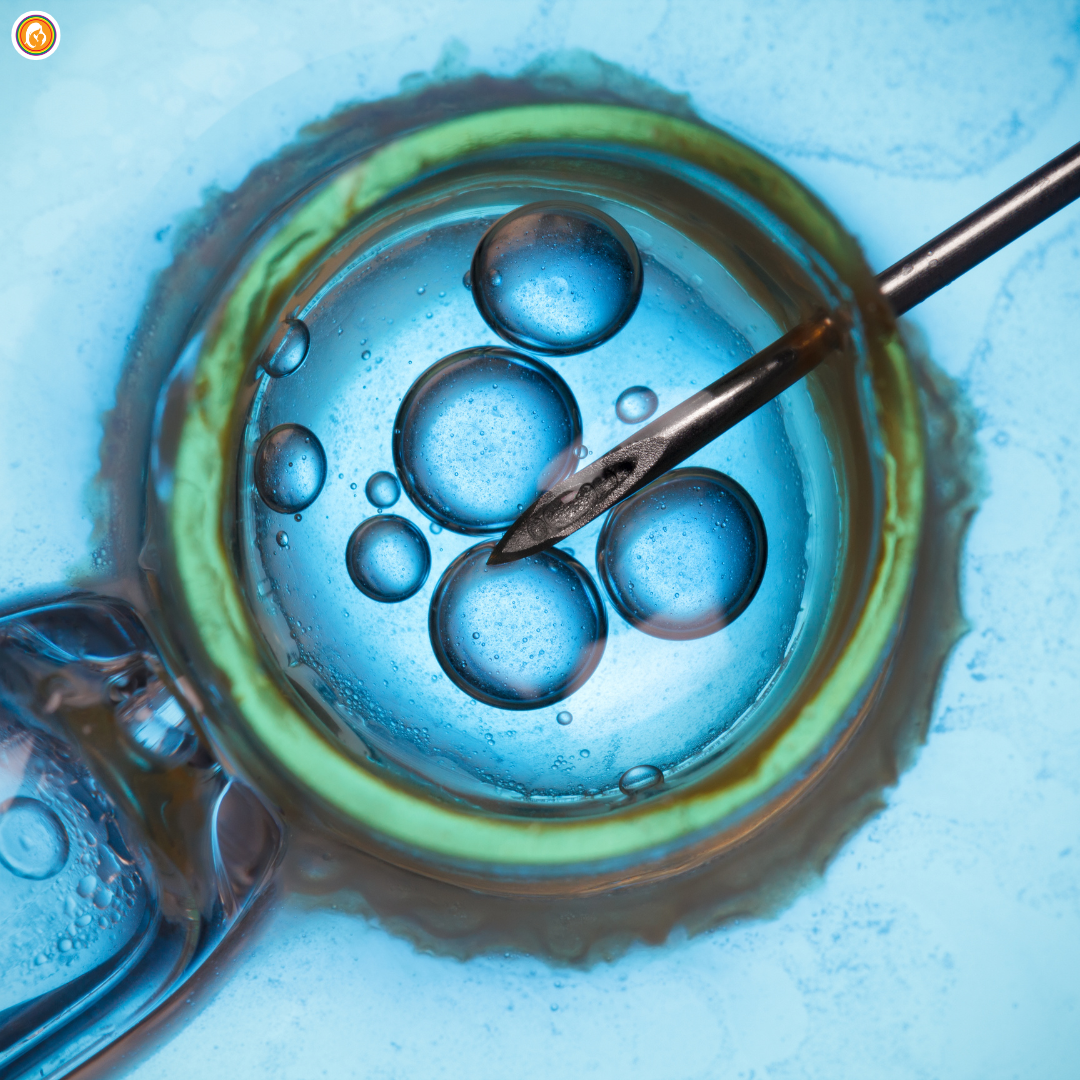What Are Chances of Twins with Surrogacy?
Did you know that only about 2-3% of natural pregnancies result in twins? This makes twins quite rare in natural births. But, with surrogacy and IVF, the chance of twins or more goes up to about 12%.
Surrogacy is a special journey that can change lives. But, it’s key for parents-to-be to know the risks of having more than one baby. We’ll look at the chances of twins in surrogacy, what makes it more likely, and what it means for everyone involved.
- Book an online appointment: Get a free online consultation.
- Call\W:+91-8800481100 Email:neelam@ivfconceptions.com
Key Takeaways
- The twin birth rate for natural pregnancies is around 2-3%, but with IVF used in surrogacy, the chances of twins or multiples increase to around 12%.
- Women over 30 and those who have had twins or multiples in previous pregnancies are more likely to have multiple births during surrogacy.
- Twins and multiples have a much higher premature birth rate, with over half of twins and nearly 90% of triplets being born prematurely.
- Maternal complications, such as maternal death rate and pre-eclampsia, increase significantly with multiples.
- Selective reduction may be an option for some intended parents, but it can be emotionally challenging for both the surrogate and the intended parents.
More Resources to Read:
Important Questions to Ask a Surrogacy Agency
Budget International Surrogacy Options: Affordable Solutions
Single Parent Surrogacy: A Path to Parenthood for Singles
Cost of Surrogacy in California – Comprehensive Guide
Understanding Multiples in Surrogacy
Surrogacy means carrying more than one baby at once. This usually means twins, sometimes triplets or more. A single pregnancy, or singleton, has only one baby growing inside.

What Causes Multiples in Surrogacy?
In surrogacy, IVF is used for embryo transfer. IVF puts multiple embryos in the surrogate’s uterus to increase the chance of success. This method, called IVF double embryo transfer, can lead to IVF twin pregnancies or IVF multiple gestations.
But, the American Society for Reproductive Medicine (ASRM) now suggests single embryo transfer (SET) as best, unless needed for health reasons. This change is because IVF works better now, and we know more about the risks of IVF twin pregnancies and IVF multiple births.
| Pregnancy Type | Low Birth Weight Risk | Very Low Birth Weight Risk | Prematurity Risk |
| Singleton | 9% | 2% | 14% |
| Twins | 57% | 9% | 65% |
The table shows that IVF twin pregnancies have much higher risks of low birth weight, very low birth weight, and prematurity than single births. These risks can mean more medical costs and health problems for the babies later.
Now, more surrogates want single embryo transfer. This makes matching with intended parents faster for those choosing this method. It shows a focus on the health of the surrogate and the babies in surrogacy.
Risks and Complications of Multiple Births
Surrogacy often leads to higher chances of having twins or more. This means there are risks and complications for the surrogate and the parents-to-be. They need to know about these risks.
| Category | Risks and Complications |
|---|---|
| Risks to the Mother | • Increased risk of gestational diabetes • Higher likelihood of preeclampsia and hypertension • Greater chance of anemia • More frequent urinary tract infections • Higher risk of postpartum hemorrhage • Increased likelihood of cesarean section • Higher risk of postpartum depression |
| Risks to the Babies | • Premature birth (before 37 weeks) • Low birth weight • Increased risk of birth defects • Higher likelihood of cerebral palsy • Greater chance of developmental delays • Increased risk of twin-to-twin transfusion syndrome (for identical twins) |
| Pregnancy Complications | • Placental problems (e.g., placenta previa, placental abruption) • Increased risk of miscarriage • Higher chance of stillbirth • More frequent fetal growth restriction |
| Long-term Considerations | • Higher financial burden for medical care and child-rearing • Increased parental stress and fatigue • Greater likelihood of relationship strain between parents • Potential challenges in providing individual attention to each child |
| Delivery Complications | • Higher risk of cord prolapse • Increased chance of fetal malpresentation (e.g., breech position) • Greater likelihood of emergency cesarean section |
| Neonatal Complications | • Higher risk of respiratory distress syndrome • Increased likelihood of jaundice • Greater chance of necrotizing enterocolitis • Higher risk of intraventricular hemorrhage |
-
Selective Reduction
When expecting twins or more, a process called selective reduction might be talked about. This means reducing the number of fetuses to just one. It aims to lower the risks of carrying many babies. The decision is made together by the surrogate and the parents.
-
Complications and Birth Risks with Multiples
Multiple pregnancies, like those from IVF or surrogacy, have more risks. Over 50% of twins and almost 90% of triplets are born too soon. This means they often need to stay in the hospital and in the NICU. The risks for the mom are also higher, including pre-eclampsia and even death.
Having twins from surrogacy can also be very costly. The delivery and care for twins can cost a lot, with NICU stays costing over $500,000. Surrogates may also need to rest a lot, adding to the costs.
It’s important for parents and surrogates to talk openly about the risks of having twins or more. Knowing these risks helps make better decisions. It ensures everyone’s well-being.
What Are Chances of Twins with Surrogacy?

Having twins through surrogacy is more likely than having them naturally. The twin rate for natural births is about 2-3%. But, with IVF, the chances go way up.
When using surrogacy and IVF, the chance of twins can hit 12%. This happens because often, several embryos are put into the surrogate’s uterus. This increases the chance of twins.
But, the risk of twins in surrogacy has gone down over time. This is thanks to better IVF technology. Now, doctors usually suggest transferring just one embryo unless the parents want twins or more.
The chance of twins also depends on the surrogate’s age, her past pregnancies, and how many embryos are transferred. Deciding on a multiple birth should be thought over carefully. It’s important to look at the good and bad sides.
“In surrogacy, the chances of having twins primarily depend on whether multiple embryos are transferred to the surrogate mother’s uterus. This method increases the likelihood of a twin gestational pregnancy.”
For some parents, having twins is a dream come true. But, it’s key to know the extra challenges and costs that come with twins. Talking about this with your surrogacy team and doctors is important. This way, you can make a well-informed choice.
Reasons for Seeking Multiple Births in Surrogacy
Some parents might want to have more than one child through surrogacy. There are good reasons for this choice.
Why Do Some People Seek Multiple Surrogacy Babies?
One reason is to grow their family fast. Surrogacy can take a lot of time and money. So, having twins or more can be a smart way to build a big family without more effort.
Also, having twins or more can make surrogacy cheaper. Even though it costs more to carry and deliver twins, it might be cheaper than doing surrogacy twice.
For some, like same-sex male couples, it’s a chance to have kids linked to both partners. They use donor eggs and put in more embryos. This way, they get siblings who are not just siblings but also have different biological parents. However, it is allowed to have 2 different surrogates for both parents.
| Reason for Multiple Births | Benefit |
| Expanding family quickly | Achieves family-building goals through a single surrogacy journey |
| Reducing overall surrogacy costs | Multiple births can be more cost-effective than separate surrogacy procedures |
| Genetic diversity for same-sex couples | Allows both partners to have biological children through the use of donor eggs and embryo transfer |
But, having twins or more through surrogacy has its risks. Parents and surrogates should think about these risks before making a choice.
More Resources to Read:
Standard vs. Guaranteed Surrogacy Programs: Key Differences
Standard vs. Guaranteed Surrogacy Programs: Key Differences
ICSI: Fertility Treatment with Sperm Injection
Female Infertility Causes Symptoms And Treatments
Conclusion
Surrogacy brings joy, excitement, and pride. But, it’s important to know the risks and challenges too. Surrogate pregnancies with more than one embryo can lead to health issues like gestational diabetes and early births.
These problems don’t take away from the chance to build a family through surrogacy. Being aware of the risks helps you prepare for a healthy surrogacy journey. With the right support and advice, the good parts of surrogacy can be more than the bad.
Starting this journey means being open-minded and ready to learn. It’s a chance to deeply impact your life and others. With care and preparation, you can make your surrogacy journey successful. This way, you can enjoy the gift of creating a family and making memories that last.
Our team has over 14 years of experience facilitating surrogacy arrangements, egg donation, and serving as an advocacy resource for infertile couples and LGBTQ individuals seeking to build families. Till now we have helped and supported thousands of the intended parents with their family-building journey, and we can help you as well. Happy to share the references from the past IPs if needed.
If you’d like to learn more about IVF, Egg Donation, or surrogacy services globally, check out the rest of our website at Georgia Surrogacy Agency. We offer legally secure and affordable surrogacy consulting services for FREE.
Our team has over 14 years of experience facilitating surrogacy arrangements, egg donation, and serving as an advocacy resource for infertile couples and LGBTQ individuals seeking to build families.
Get in touch for FREE SURROGACY CONSULTING:
Mobile: +91-8800481100 ( WhatsApp, Line, Viber)
Email: neelam@ivfconceptions.com

FAQ for chances of twins with surrogacy
What are the chances of twins with surrogacy?
Using IVF in surrogacy can boost the chance of twins. Normally, twins happen in about 2-3% of natural pregnancies. But with IVF, this jumps to around 12%.
What are multiples?
“Multiples” means having more than one baby at once, usually twins. Rarely, it can be triplets or more. “Singleton” means having just one baby in the womb.
What causes multiples in surrogacy?
IVF is used in surrogacy, and sometimes more than one embryo is put in the uterus. This boosts the chance of more than one taking hold, leading to twins or more.
What are the risks and complications of multiple births in surrogacy?
Twins more often lead to premature births, with over half of twins and almost 90% of triplets being born early. This also raises risks for the mother, like death, pre-eclampsia, and other serious issues.
What is selective reduction?
Selective reduction means reducing the number of fetuses from twins or more to one. It’s a topic to discuss with parents when the chance of twins is higher.
Why do some people want to have multiple surrogacy babies?
Some families or surrogates choose multiple births to avoid the surrogacy process again. It can also make surrogacy cheaper in some cases.
Source Links
- Surrogacy and the Chances of Multiples
- Multiple Births in Surrogacy: The Chances of Triplets and Twins – Adonis Fertility International
- GESTATIONAL SURROGACY: SINGLETON OR TWINS There are known risks and costs associated with multiple births — ARTparenting
- Understanding the Risk of Surrogacy Twins- Physician’s Surrogacy

Highly esteemed, authoritative, and trusted professional with a 14-year of experience in international surrogacy. Advocate for Secure, Legal, and Affordable International Surrogacy.
Neelam Chhagani, MA (Counselling Psychology) and Holistic Infertility and Third-Party Reproduction Consultant.
Member of European Fertility Society, Best Surrogacy Blogger of 2020, with 300 dedicated blogs, and top contributor on Quora for Surrogacy.


Add Your Comment